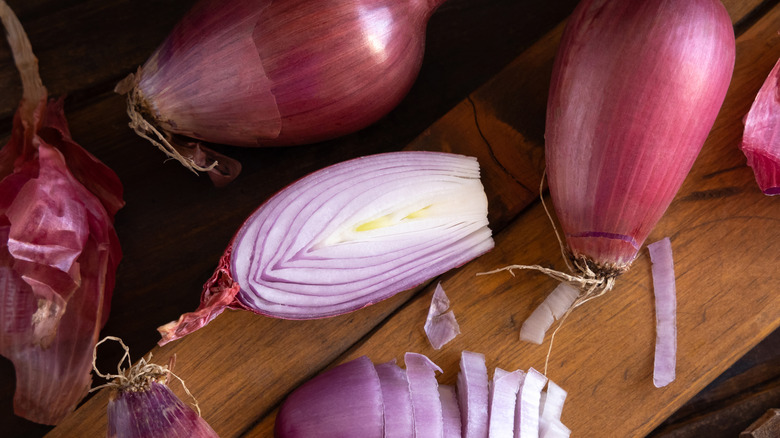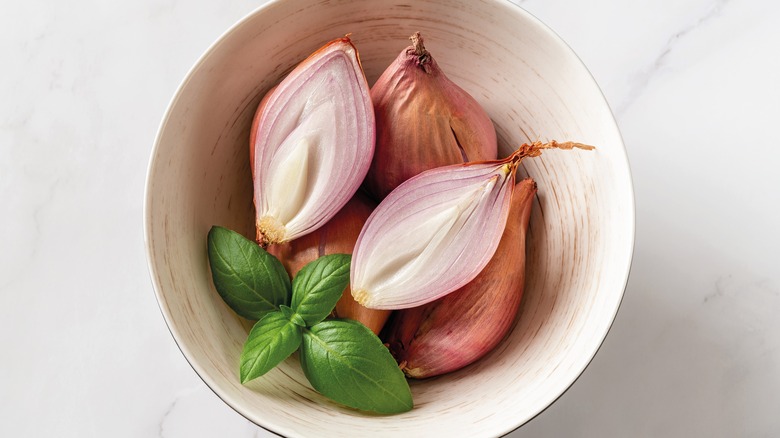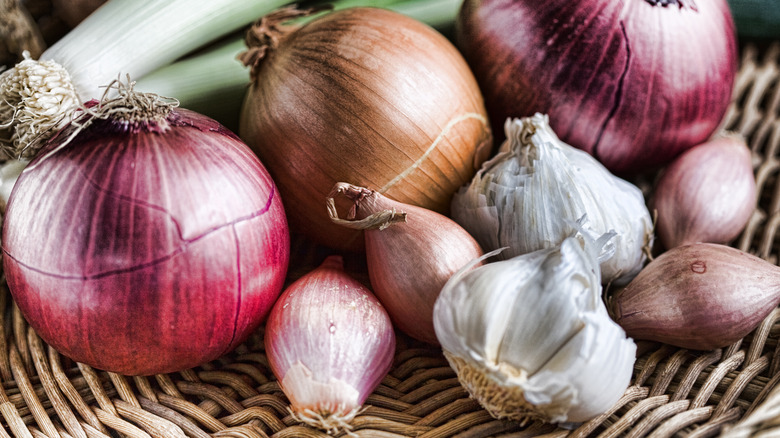The Water Hack That Makes Peeling Shallots Painless
Between handing a sharp knife with tears streaming down your face and dealing with those tiny layers, peeling shallots can be a challenging, even hazardous task. However, there's a simple way to save your fingers and your sanity — all it requires is hot water. To remove the thin skin from shallots effortlessly, briefly immerse them in hot water and then peel them with ease.
This technique closely resembles blanching, a process in which a vegetable is briefly submerged in boiling water to loosen its outer layers without actually cooking it. Typically, the vegetable is then immediately cooled in cold water to prevent the cooking process from penetrating deeper into the layers of the vegetable.
Because shallots are dense, only their outer skin is affected, and they remain uncooked. They soften just enough to slide off, leaving you with a perfectly prepared shallot for making the perfect salad dressing and more.
How to blanch shallots
To remove the paper-thin layer of skin from shallots, you'll need a bowl large enough to hold the number of shallots you intend to use, with some space at the top for submerging them. Begin by heating water and placing the shallots in the bowl.
You can trim the root end before blanching to make the skin removal even easier. Then, pour hot to boiling water over the shallots and wait. Most recommendations suggest leaving them for five to 10 minutes, although the time may vary depending on the size and quantity of shallots.
You'll know they're ready when you can easily peel away the skin, while the shallot itself remains uncooked. If the shallots are too warm, rinse them under cold water or prepare an ice bath to cool them, following the same process as you would with blanching. (If you plan to use them immediately in a hot preparation, this step is unnecessary.)
Storing shallots and using the technique for garlic
The best part about this hack is that you can do it ahead of time and store the shallots for future use. Just be sure to buy shallots that are free of mold and other issues with firm, dry skin.
Once the shallots are peeled, if you're planning to use them within a week, pat them dry and store them in a container in the refrigerator. If you need them for a future date, blanched and frozen shallots can be kept for three to six months in freezer-safe containers. (Always label anything you freeze with the date.)
This technique can also be applied to other hard-to-handle vegetables, such as garlic. Garlic is notoriously challenging to peel without crushing it. Quick-blanching individual cloves of garlic will release their outer skin, just as it does for shallots. These blanched garlic cloves can then be used or stored in a similar way to shallots for a variety of recipes.


